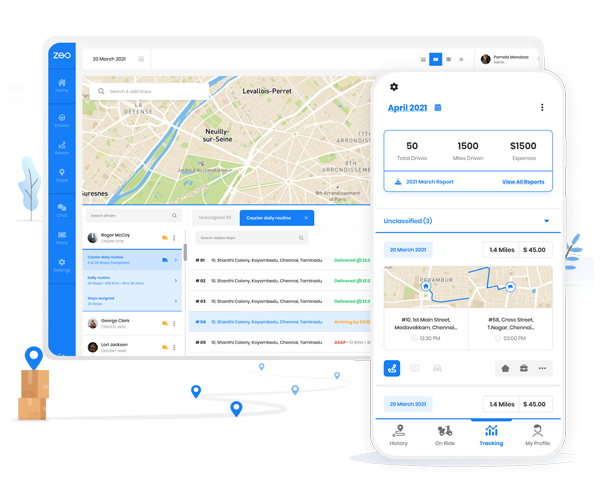Every time a meal, parcel, or grocery order arrives at the door, the transaction isn’t quite over. A silent question follows: How much should you tip the person who brought it?
The answer isn’t obvious, because it varies not just by country, but also by platform, context, and the assumptions built into the system delivering it.
Tipping doesn’t necessarily define generosity. In fact, it has real consequences for income distribution, labor dignity, and platform accountability. In some regions, it’s the driver’s livelihood. In others, it’s a cultural misstep.
This piece explores tipping customs across countries, breaks down what constitutes fair tipping, and clarifies when $5 or 10% isn’t enough, or even appropriate.
Tipping Tiers Across Cultures
What tipping means depends entirely on your location. In some places, it’s a lifeline that makes the job worth showing up for. Elsewhere, it’s more of a gesture, something people do out of habit, or not at all, without much thought.
In a few regions, tipping is avoided entirely because it disrupts cultural notions of service, equality, and pride. Understanding these distinctions matters if you’re trying to be both respectful and fair.
Compensation-Based Tipping
Tips aren’t optional in these systems. Delivery workers depend on them to bridge the gap between sub-minimum platform pay and real-world expenses like gas, maintenance, and time.
A low or missing tip can directly affect income. These are the countries where tips are used as a financial supplement when base wages fall short.
Countries: United States, Canada, South Africa
Reward-Driven Tipping
Workers receive stable wages, but tips are still appreciated, particularly when deliveries are challenging, the weather is unfavorable, or the customer wants to acknowledge speed, politeness, or extra effort taken. Tips in these places are seen as a token of appreciation for effort, rather than a means of survival.
Countries: UK, Germany, Australia, France
Tipping-Free Cultures
There are regions where tipping is not expected. Chances are, drivers may even decline it. This is because service excellence is a standard feature that is built into the cost of the order.
Often, tipping here can be considered inappropriate or confusing, especially when it involves cash. It’s because these are cultures rooted in values of dignity, respect, and price transparency.
Countries: Japan, South Korea, China
How Much Should You Tip a Delivery Driver?
At the heart of it is how delivery work is compensated. In some places, drivers earn a fixed wage and operate as employees. Elsewhere, they work as independent contractors who rely heavily on tips to make the job viable.
The expectations around tipping also shift based on cultural values. In certain cities, a flat dollar amount matters more than a percentage. In others, customers default to rounding up or handing over coins as a symbolic gesture.
Tipping practices fall into three broad systems:
Tip-as-Wage Economies
In the U.S., Canada, and South Africa, tips are critical. Drivers rely on them to make ends meet. The base pay often doesn’t cover fuel, time, and effort.

increase fuel savings
Save $200 on fuel, Monthly!
Optimize routes with our algorithm, reducing travel time and costs efficiently.
Get Started for Free
Here, 15–20% or a $5 minimum is considered fair. Higher for large orders or poor weather.
Tip-as-Extra Cultures
The UK, France, Germany, and Australia lean toward optional tipping. A modest £1–2 or rounding up is polite.
Higher tips are appreciated when the job demands more: tight delivery windows, stairs, or multiple packages.
No-Tip Norms
Japan, South Korea, and China operate without tipping. The cost of service is built into fees. Drivers are paid as employees, and tipping may be viewed as awkward or inappropriate.
| Region | Tip Benchmark | Context |
| USA | 15–20% or $5+ | Standard for all delivery types |
| Canada | 10–15% or CA$3–6 | Similar to U.S.; varies by city |
| UK | £1–2 or round up | Extra for effort or poor weather |
| France | €2–3 | Optional; included in service in many areas |
| Australia | AUD $2–5 (optional) | No expectation, generous if given |
| Japan | No tip | Tipping is not practiced |
| South Korea | No tip | Tipping not customary |
| India | ₹30–50 or 5–10% | Optional; varies across cities |
| South Africa | R10–30 | Expected for food or parcel deliveries |
Real-World Scenarios: Is $5 Enough? Is 10% Too Much?
Once you understand the cultural backdrop, the next question becomes tactical. You’re ordering groceries, or a late-night meal, or a pharmacy run for a relative, and the app asks for a tip. You pause. Do you go with 10%? A flat $5? Round it up to something nicer?
These moments happen daily, but most people guess. The result: under-tipping when the task was physically demanding, or over-tipping on small, low-effort orders. Percentage-based logic doesn’t always work, especially in deliveries where effort isn’t tied to bill value.
So what’s fair? That depends on what was delivered, how, and where.
Is $5 a Good Tip for Grocery Delivery?
That depends on what’s being delivered. A $5 tip for a single bag of milk and eggs might be generous in Vancouver, but it would be insufficient for eight heavy bags up two flights in Chicago.
Time, weight, weather, and distance all matter. In many cities, $10 to $15 is a more accurate reflection of the effort required for full grocery orders. For instance, in Canada, the tip was 11.9% for food service delivery.
Is 10% Tip Too Low for Delivery?
Percentage-based tips can backfire. A $100 delivery involving minimal effort doesn’t justify $20. But a $15 delivery with stairs, delays, and a heavy bag isn’t fairly compensated with $1.50. In most tipping economies, flat minimums paired with effort-based adjustments make more sense.
Here’s a quick snapshot of what to pay:
| Order Type | Location | Tip Given | Driver Feedback |
| 2-bag grocery | Los Angeles | $5 | Fair for size and distance |
| Full grocery order | Chicago | $5 | Too low for effort involved |
| Food delivery, rain | Mumbai | ₹50 | Considered respectful |
Rule of Thumb:
- $3–5 minimum for food or small parcels
- $10–15+ for large groceries or weather-intensive days
- Adjust based on effort, not just subtotal
Conclusion
Tipping requires a fair judgment call based on context. If the country depends on tips to support workers, under-tipping isn’t just impolite, it’s exploitative. If the region pays drivers fairly, a small tip can still be a gesture of appreciation for the extra effort they put in.
Before deciding how much to tip, consider the physical strain, waiting time, fuel costs, and conditions outside. Remember that every city has its own rules, but the logic remains the same: match the tip to the effort, not the subtotal.

Are you a fleet owner?
Want to manage your drivers and deliveries easily?
Grow your business effortlessly with Zeo Routes Planner – optimize routes and manage multiple drivers with ease.

increase fuel savings
Save $200 on fuel, Monthly!
Optimize routes with our algorithm, reducing travel time and costs efficiently.
Get Started for Free




















